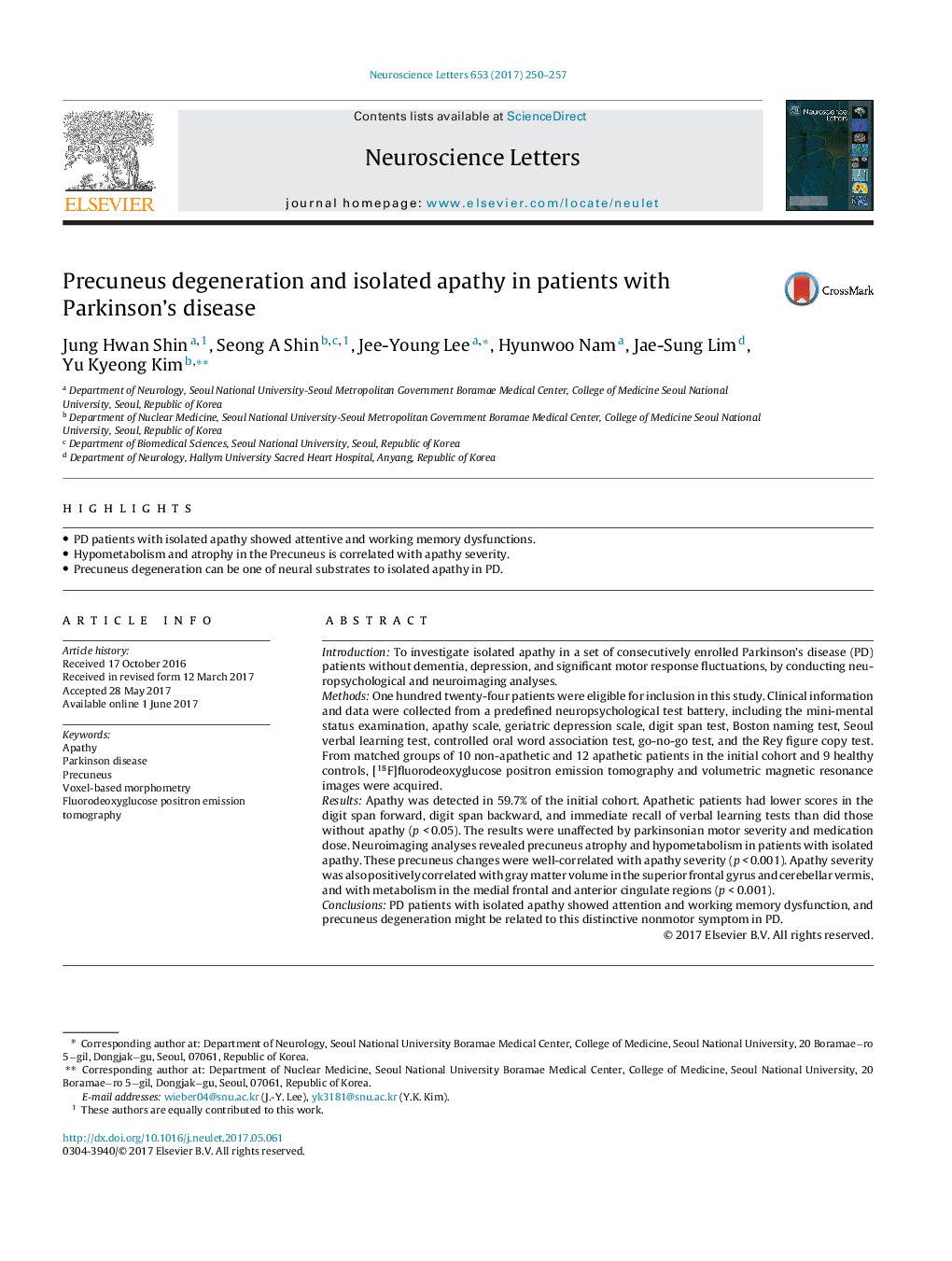| Article ID | Journal | Published Year | Pages | File Type |
|---|---|---|---|---|
| 5738139 | Neuroscience Letters | 2017 | 8 Pages |
â¢PD patients with isolated apathy showed attentive and working memory dysfunctions.â¢Hypometabolism and atrophy in the Precuneus is correlated with apathy severity.â¢Precuneus degeneration can be one of neural substrates to isolated apathy in PD.
IntroductionTo investigate isolated apathy in a set of consecutively enrolled Parkinson's disease (PD) patients without dementia, depression, and significant motor response fluctuations, by conducting neuropsychological and neuroimaging analyses.MethodsOne hundred twenty-four patients were eligible for inclusion in this study. Clinical information and data were collected from a predefined neuropsychological test battery, including the mini-mental status examination, apathy scale, geriatric depression scale, digit span test, Boston naming test, Seoul verbal learning test, controlled oral word association test, go-no-go test, and the Rey figure copy test. From matched groups of 10 non-apathetic and 12 apathetic patients in the initial cohort and 9 healthy controls, [18F]fluorodeoxyglucose positron emission tomography and volumetric magnetic resonance images were acquired.ResultsApathy was detected in 59.7% of the initial cohort. Apathetic patients had lower scores in the digit span forward, digit span backward, and immediate recall of verbal learning tests than did those without apathy (p <Â 0.05). The results were unaffected by parkinsonian motor severity and medication dose. Neuroimaging analyses revealed precuneus atrophy and hypometabolism in patients with isolated apathy. These precuneus changes were well-correlated with apathy severity (p <Â 0.001). Apathy severity was also positively correlated with gray matter volume in the superior frontal gyrus and cerebellar vermis, and with metabolism in the medial frontal and anterior cingulate regions (p < 0.001).ConclusionsPD patients with isolated apathy showed attention and working memory dysfunction, and precuneus degeneration might be related to this distinctive nonmotor symptom in PD.
